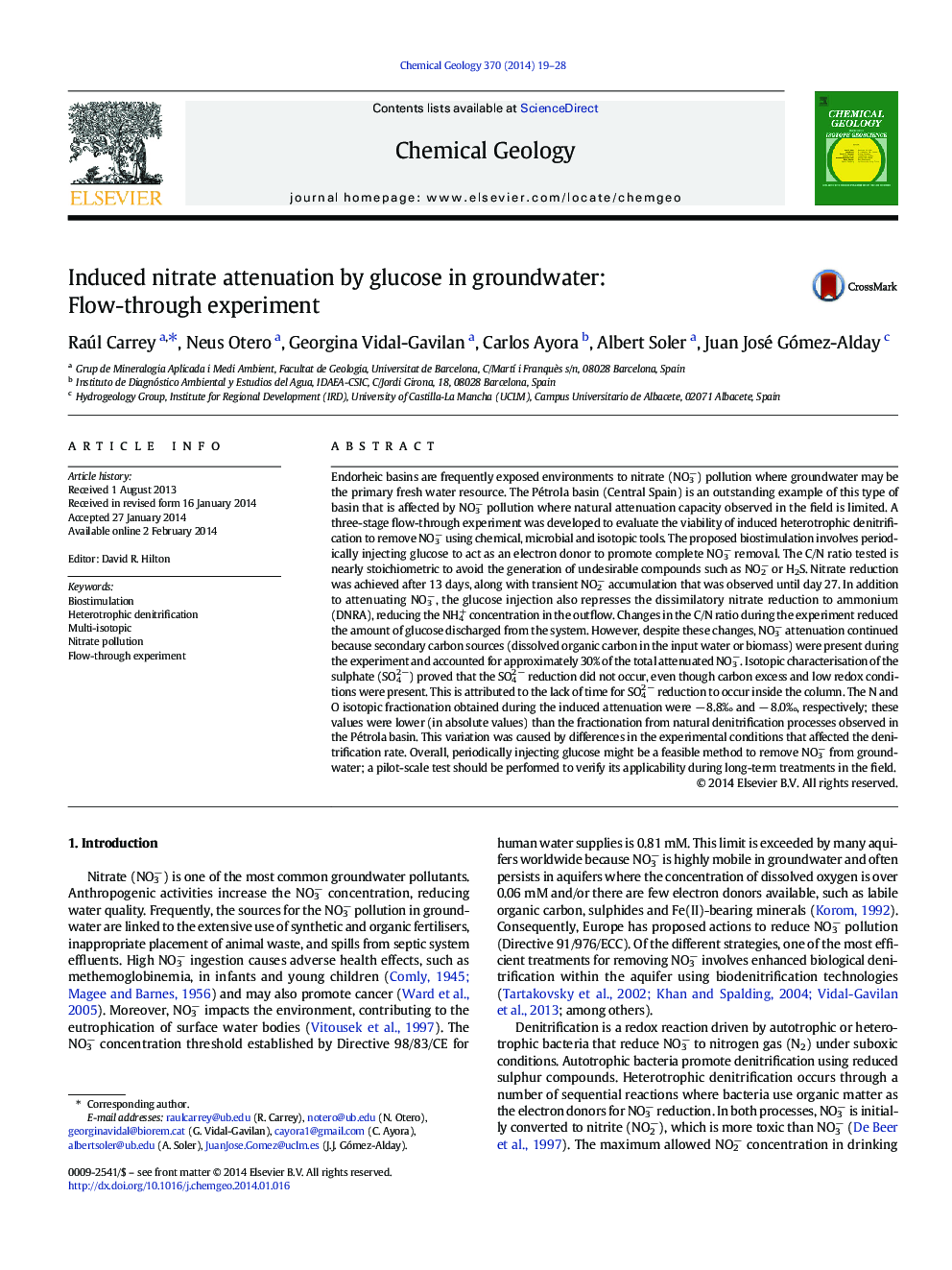| کد مقاله | کد نشریه | سال انتشار | مقاله انگلیسی | نسخه تمام متن |
|---|---|---|---|---|
| 4698780 | 1637600 | 2014 | 10 صفحه PDF | دانلود رایگان |
• A column experiment was developed to assess the viability of induced denitrification.
• C/N ratios close to or below the stoichiometry reliably removed NO3− from water.
• DNRA observed prior to biostimulation was repressed after glucose inoculation.
• The isotopic data indicated that SO42 − reduction did not occur.
• The treatment proposed might be a suitable method to remove NO3− from groundwater.
Endorheic basins are frequently exposed environments to nitrate (NO3−) pollution where groundwater may be the primary fresh water resource. The Pétrola basin (Central Spain) is an outstanding example of this type of basin that is affected by NO3− pollution where natural attenuation capacity observed in the field is limited. A three-stage flow-through experiment was developed to evaluate the viability of induced heterotrophic denitrification to remove NO3− using chemical, microbial and isotopic tools. The proposed biostimulation involves periodically injecting glucose to act as an electron donor to promote complete NO3− removal. The C/N ratio tested is nearly stoichiometric to avoid the generation of undesirable compounds such as NO2− or H2S. Nitrate reduction was achieved after 13 days, along with transient NO2− accumulation that was observed until day 27. In addition to attenuating NO3−, the glucose injection also represses the dissimilatory nitrate reduction to ammonium (DNRA), reducing the NH4+ concentration in the outflow. Changes in the C/N ratio during the experiment reduced the amount of glucose discharged from the system. However, despite these changes, NO3− attenuation continued because secondary carbon sources (dissolved organic carbon in the input water or biomass) were present during the experiment and accounted for approximately 30% of the total attenuated NO3−. Isotopic characterisation of the sulphate (SO42 −) proved that the SO42 − reduction did not occur, even though carbon excess and low redox conditions were present. This is attributed to the lack of time for SO42 − reduction to occur inside the column. The N and O isotopic fractionation obtained during the induced attenuation were − 8.8‰ and − 8.0‰, respectively; these values were lower (in absolute values) than the fractionation from natural denitrification processes observed in the Pétrola basin. This variation was caused by differences in the experimental conditions that affected the denitrification rate. Overall, periodically injecting glucose might be a feasible method to remove NO3− from groundwater; a pilot-scale test should be performed to verify its applicability during long-term treatments in the field.
Journal: Chemical Geology - Volume 370, 26 March 2014, Pages 19–28
